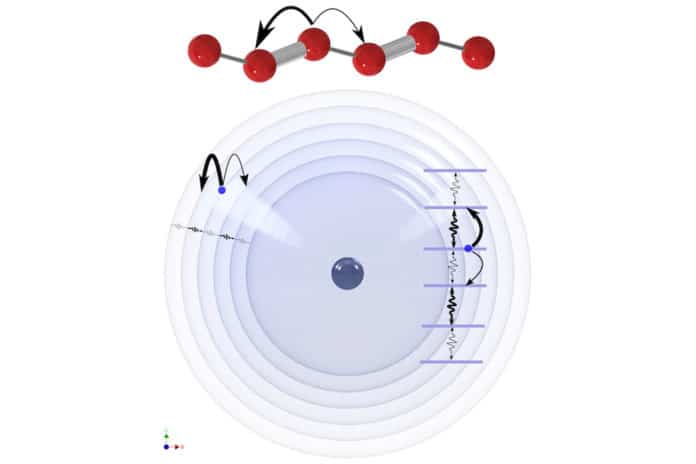A synthetic dimension is a degree of freedom encoded into a set of internal or external states that can mimic the motion of a particle in a real-space lattice potential. They are powerful tools for quantum simulation, opening exciting possibilities.
Recently, physicists at Rice University figured out how to control electrons in gigantic Rydberg atoms with such accuracy they can create synthetic dimensions. Physicists developed a method to engineer the Rydberg states of ultracold strontium atoms by applying resonant microwave electric fields to couple many states together.
By precisely and flexibly controlling the electron movement, the group could couple latticelike Rydberg levels in manners that simulate aspects of real materials.
A Rydberg atom is an atom excited into a high energy level. They possess several regularly spaced quantum energy levels. This allows the highly excited electron to move from level to level.
Kaden Hazzard from the Department of Physics and Astronomy, Rice University said, “In a typical high school physics experiment, one can see light emission lines from atoms that correspond to transitions from one energy level to another. One can even see this with a very primitive spectrometer: a prism!”
“What is new here is that we think of each level as a location in space. By sending in different wavelengths of light, we can couple levels. We can make the levels look like particles that move around between locations in space.”
“That’s hard to do with light — or nanometer-wavelength electromagnetic radiation –, but we’re working with millimeter wavelengths, which makes it technically much easier to generate couplings.”
Rice physicist Tom Killian said, “We can set up the interactions, the way particles move and capture all the important physics of a much more complicated system.”
“The really exciting thing will be when we bring multiple Rydberg atoms together to create interacting particles in this synthetic space. With this, we’ll be able to do physics that we can’t simulate on a classic computer because it gets complicated very quickly.”
Scientists demonstrated their technique by realizing a 1D lattice known as a Su-Schrieffer-Heeger system. To make it, they utilized lasers to cool strontium atoms and applied microwaves with alternating weak and strong couplings to make the legitimate engineered scene. The second lasers were used to invigorate molecules to the complex of coupled, high-lying Rydberg states.
Killian said, “The experiment revealed how particles move through the 1D lattice or, in some cases, are frozen at the edges even though they have enough energy to move. This relates to material properties that can be described in terms of topology.”
Graduate student Soumya Kanungo said, “Using a quantum simulator is kind of like using a wind tunnel to isolate the small but important effects that you care about among the more complicated aerodynamics of a car or airplane. This becomes important when the system is governed by quantum mechanics, where as soon as you get more than a couple of particles and a few degrees of freedom, it becomes complicated to describe what’s going on.”
“Quantum simulators are one of the low-hanging fruits that people think will be early, useful tools to come out of investments in quantum information science. This experiment combined techniques that are now fairly standard in labs that study atomic physics.”
“All the technologies are well-established. You could even conceive of this becoming almost a black box experiment that people could use because the individual pieces are very robust.”
Journal Reference:
- Kanungo, S.K., Whalen, J.D., Lu, Y. et al. Realizing topological edge states with Rydberg-atom synthetic dimensions. Nat Commun 13, 972 (2022). DOI: 10.1038/s41467-022-28550-y
